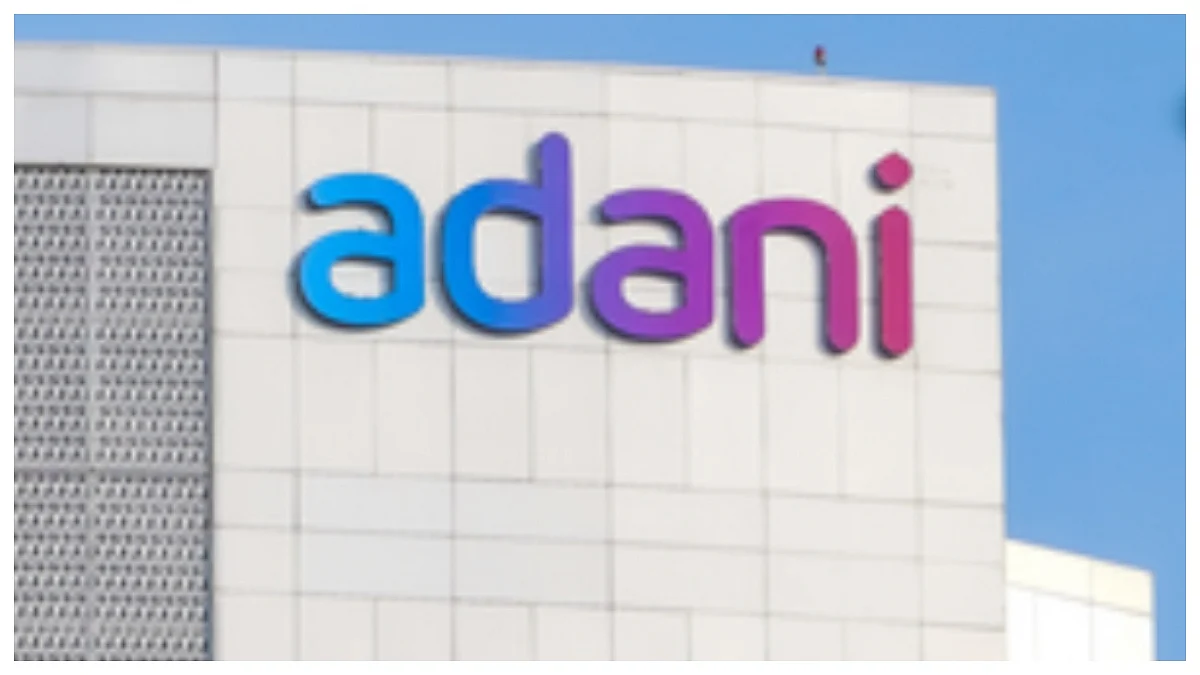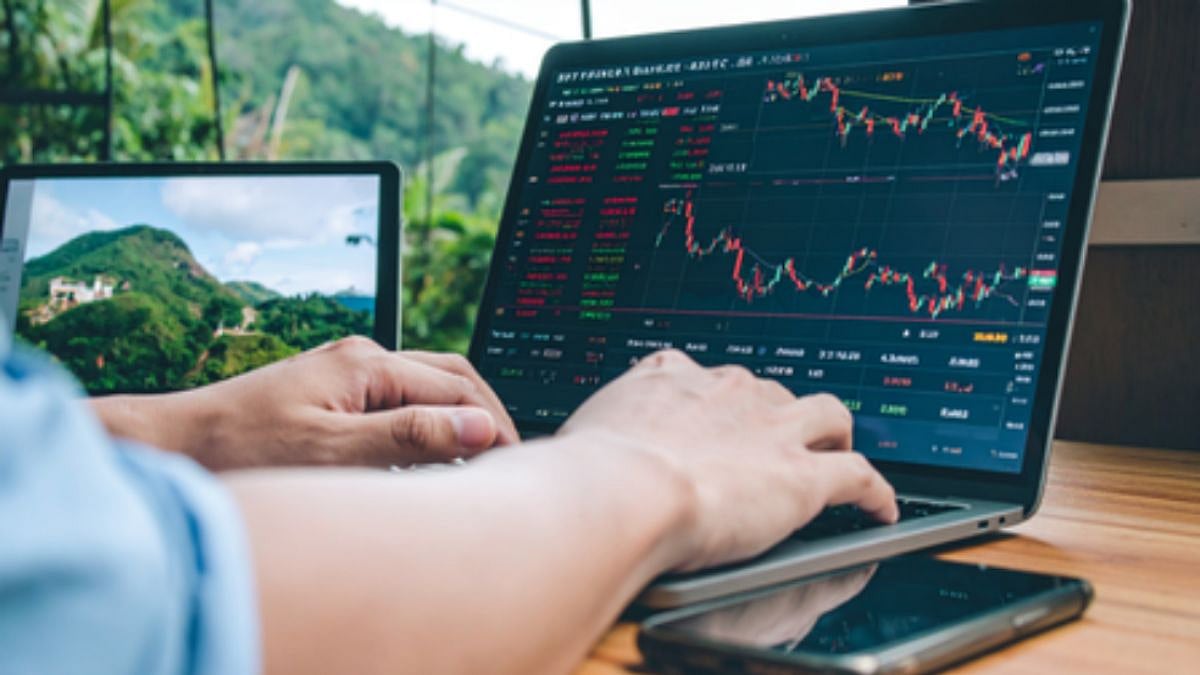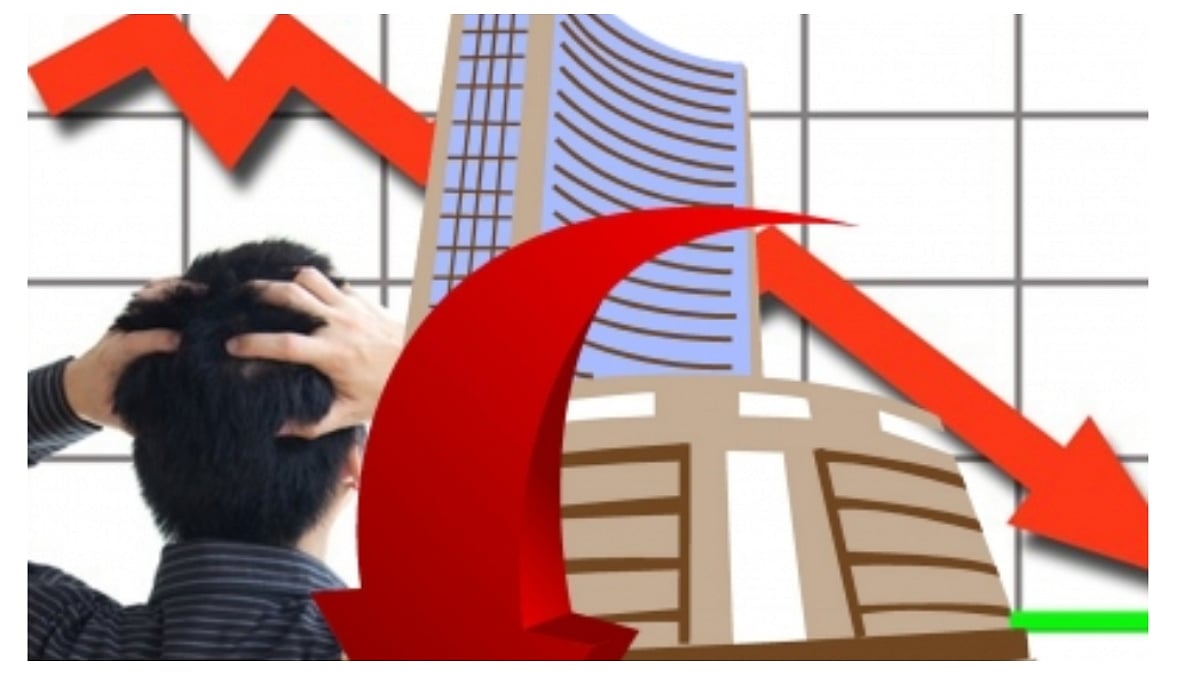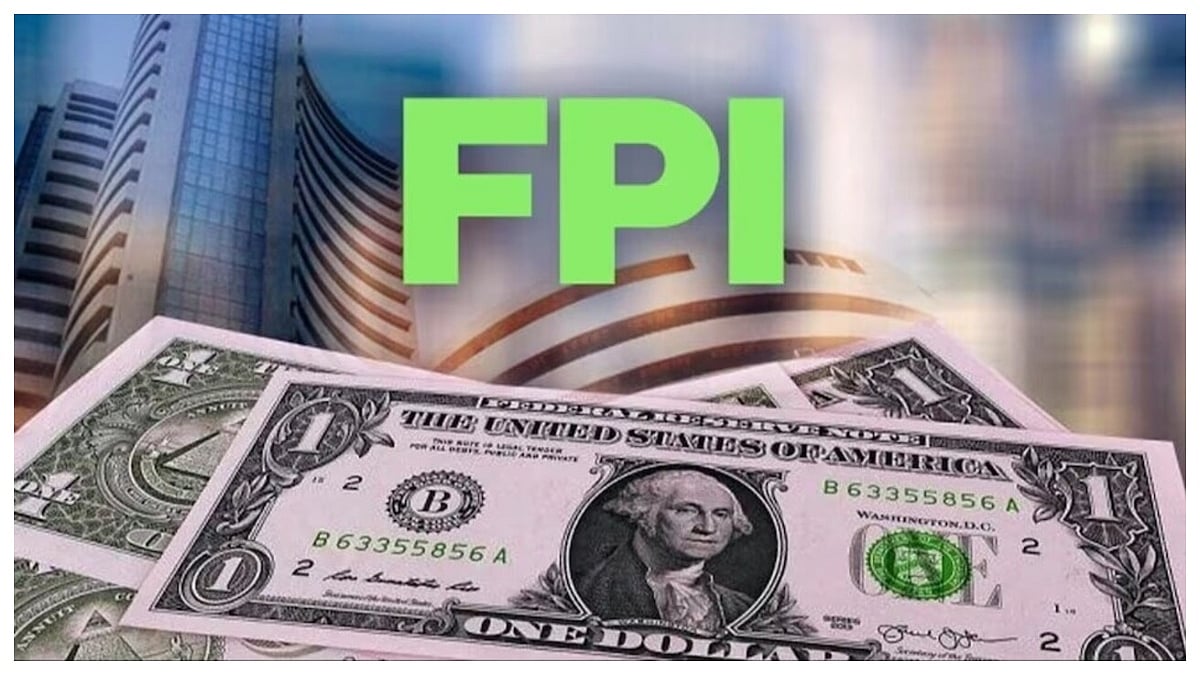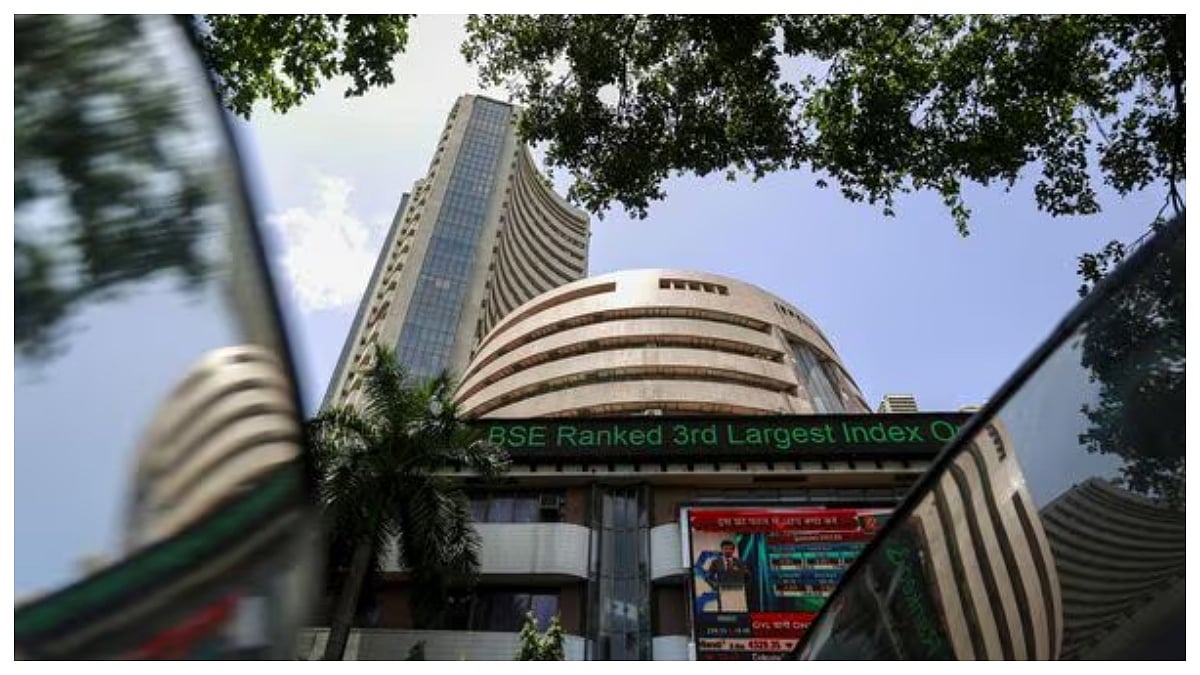India's gross domestic product (GDP) in the second quarter of the fiscal year 2021-22 grew at 8.4 percent, official data released on November 30 showed.
The GDP growth in April-June quarter this fiscal stood at 20.1 per cent. The Indian economy had contracted by 24.4 per cent in April-June last year.
The gross domestic product (GDP) had contracted by 7.4 per cent in the corresponding July-September quarter of 2020-21, according to data released by the National Statistical Office (NSO).
GDP at Constant (2011-12) Prices in April-September 2021-22 (H1 2021-22) is estimated at Rs 68.11 lakh crore as against Rs 59.92 lakh crore during the corresponding period of previous year, showing a growth of 13.7 per cent in H1 2021-22 as against a contraction of 15.9 per cent during the same period last year, it stated.
The government had imposed a nationwide lockdown at the onset of the COVID-19 pandemic last year.
China has recorded a growth of 4.9 per cent in the July-September period of 2021.
India Inc reaction
Sandeep Bagla,CEO,TRUST Mutual Fund
The GDP growth was at 8.4 percent, as per expectations. One surprise was the lower growth in manufacturing sector. Seems to suggest that the output gap is not narrowing as swiftly. The MPC meeting in December will have to consider the growth in GDP as well as the possibility of slowdown due to the new virus strain.
Rajani Sinha, Chief Economist and National Director - Research, Knight Frank India
The improvement in GDP growth in Q2 FY22 is on expected lines. With increased vaccination and economy moving back to normalcy, most high frequency economic indicators have bounced back above pre-COVID levels. Corporate performance as reflected by quarterly results have also been showing healthy improvement in the economy.
While consumption has recorded an improvement, a more broad-based consumption recovery would be critical for sustainable and inclusive growth. For that to happen it will be critical for the unorganized sector and the MSME segment to also bounce back quickly. While capacity utilization levels would have improved in the last quarter, private investment may still take time to recover as corporates and banks remain risk averse given the looming uncertainties. High commodity prices and global supply bottlenecks would pose a challenge for the manufacturing sector. The emergence of the new COVID variant has infused uncertainty in the system. If this uncertainty lingers or aggravates, it would adversely impact business and consumer sentiments, with repercussions on the economic growth.
Rohit Poddar, Managing Director, Poddar Housing and Development Ltd.
The economic activity in Q2 FY22 received favorable support from recovery in manufacturing and construction. The gradual removal of lockdown, good monsoon year and an increasing number of vaccinations helped boost consumer confidence. India’s Q1 & Q2 FY22 growth is optically higher due to negative growth in Q1 & Q2 of FY21. The H1FY21 saw the worst growth period in the past few decades as the economic activity was severely impacted due to pandemic-induced lockdowns, but now the indicators are at a positive 8.4 percent, majorly due to government support across all sectors. Even though the situation has drastically improved this year, several economic challenges such as rising inflation, high input cost, and crude price may limit govt’s capacity to act on the fiscal front.
The risk arising due to the Omicron variant are key risks to growth going forward. Continued low interest and easy liquidity policy will help sustainable growth.
Ram Raheja - Director, S Raheja Realty
GDP for the second quarter of the financial year grew by 8.4 percent from a year ago, marking a fourth straight quarter of expansion. Real estate will remain an investment of choice given that some uncertainty still persists. With the focus of improving infrastructure, the construction segment has shown phenomenal improvement. Going forward, different industries hope to get a constructive result/response from the upcoming RBI Monetary policy meet coming next.
Nitin Bavisi, Group CFO at Ajmera Realty & Infra India Ltd
Q2 GDP Data of 2021-2022 has shown notable recovery. However, it still is what it was in the second quarter of 2019-2020. Real Estate is the backbone of the economy and has the potential to contribute upto 13 percent to GDP by 2030 if harnessed well. The first thing to note is that the real estate sector is the third largest sector in terms Foreign Direct Investment flow and second largest employment generator and third largest sector to induce economic growth.
Real estate sector is expanding with multi-fold increase in demand and showcasing impressive growth. Keeping in mind rising inflation and increasing cost of raw materials, it will have an impact on the augmented purchasing power which in turn will affect demand for new properties. Massive rise in inflation will likely push RBI to hike rates. It will be important to stabilise the prices and watch out on the consumption. In the times to come, India’s economy is likely to gain momentum despite the risk of the new Omicron variant. With the continuous progress in vaccination, any disruptions are unlikely. Real Estate sector holds the key to the country’s economic revival.
Dr. Vijay Kalantri, Chairman, MVIRDC World Trade Center, Mumbai
We welcome the 8.4 percent GDP growth in the second quarter of the current financial year, which is largely backed by growth in private consumption, investment and exports. The growth could have been even higher had we seen faster recovery in hospitality, travel and entertainment services, which are still below the pre-pandemic level.
India’s growth is also powered by an increase in private investment, especially the strong risk capital flowing into our start-up ecosystem. In future, if we need to sustain this growth trajectory, we need to stimulate bank credit growth to the private sector.
It is worrisome that growth in non food bank credit has declined sharply from 18 percent in 2013 to 7 percent so far in the current financial year. The fast growing Indian economy needs capital from banks, NBFCs and FDI. To garner more resources to fuel infrastructure creation, India needs to expedite the setting up of infrastructure finance institutions, which was announced in the current year’s Union Budget.
DRE Reddy, CEO and Managing Partner at CRCL
The growth rate for Q2 is an indication of ramp up in economic activities. GDP on an increasing trend for the 4th consecutive quarter is a good sign towards recovery, giving further room for optimism fuelled by agri sector's growth. Economic recovery strengthened with high consumer spending and consumption in the festive season.
We also see a good pickup in industrial activity across all our clients from varied sectors and remain optimistic on a continuing upswing in the economy. However, fear of Omicron virus is a concern. Expect RBI to continue with favorable monetary policy to support continued growth going forward.
Suvodeep Rakshit, Senior Economist, Kotak Institutional Equities
2QFY22 real GDP growth at 8.4 percent was in line with consensus expectations. A large part of the growth upside was driven by the public administration, education, health, etc. segment which saw sharp increase in momentum as well as a favorable base effect. Overall, the sharp uptick from the second wave was visible across all segments. Investment growth remained strong even when compared to 2QFY20 (pre-COVID) levels. Growth should remain fairly well supported in 3QFY22 too on account of festive season and opening up of services sector too.
Growth remains well on track for a full year growth of around 9.5 percent. The growth numbers will unlikely play a differentiating factor for the RBI’s policy with its own estimate being at 7.9%. With a new COVID variant starting to spread globally and uncertainty on its impact on the economic scenario, the RBI would possibly wait for some more clarity before moving decisively on the rates. We maintain our call for a reverse repo rate hike in February with the December meeting remaining a close call.
Dr. D.K. Srivastava, Chief Policy Advisor, EY India
Led by a high real growth in public administration, defence services et. al. at 17.4 percent in 2QFY22, the 2QFY22 real GDP growth at 8.4 percent coming after a growth of 20.1 percent in 1QFY22 signals the feasibility of the Indian economy showing an annual growth of close to 9.5 percent for FY22. This would however require continued fiscal support and a broad-based recovery encompassing manufacturing sector as well as the services sector. This appears feasible with continued fiscal support through central government capital expenditure which grew by 38.3 percent during 1HFY22.
The quarterly output numbers show that 2QFY22 output is higher than the output in corresponding quarter for FY20 for agriculture, mining and quarrying, manufacturing, electricity, gas et. al., and public administration, defence services et. al. sectors. Output of three important sectors namely, construction, trade, hotels et. al. and financial, real estate et. al. in 2QFY22 is still below their corresponding FY20 levels. However, these sectors have shown a strong growth momentum in 2QFY22 over 2QFY21 with construction at 7.5 percent, trade, hotels, et. al. at 8.2 percent, and financial, real estate, et. al. at 7.8 percent. If this growth momentum in the service sectors is continued, recovery would be broad-based and the Indian economy can emerge on the positive side at the end of FY22 as compared to FY20.
Siddhartha Sanyal, Chief Economist and Head of Research, Bandhan Bank
The Q2FY22 GDP print of 8.4 percent was broadly in line with expectations. Overall, GDP growth looks set for a 8-9 percent range in FY22. Several high frequency indicators have recorded decent uptick in recent months. Nevertheless, indices such as Consumer Confidence is still 25-30 percent lower than their pre-COVID levels. Despite inflationary concerns in recent months, one expects policymakers to stay broadly growth-supportive, especially given the fresh concerns triggered by the Omicron variant of the coronavirus. The uptick in exports in Q2 was encouraging. However, going ahead this will remain contingent upon global recovery.
Aditi Nayar, Chief Economist, ICRA
While the Q2 FY2022 absolute level of real GDP reverted mildly above the pre-Covid level of Q2 FY2020, the disaggregated data for Q2 FY2022 is far from convincing, with considerable lags in private and government consumption expenditure being absorbed by a sharp rise in valuables relative to the pre-COVID level of Q2 FY2020. The 1.5 percent rise in gross fixed capital formation in Q2 FY2022 relative to Q2 FY2020 appears to be the lone silver lining.
The pace of GVA growth in Q2 FY2022 modestly exceeded our expectations, led by agriculture, forestry and fishing, and public administration, defence and other services. Setting aside these two sub-sectors, GVA recorded a relatively lower YoY growth of 7.5 percent. In particular, the growth of manufacturing, construction and trade, hotels etc. trailed our forecasts, suggesting that rising input costs bit corporate margins, and contact-intensive services continued to trail the pre-covid levels.
Although the GDP and GVA YoY growth are slightly higher than our forecasts, we dont believe that the disaggregated data offers meaningful signals of a durable recovery, especially with private final consumption expenditure continuing to trail the pre-COVID level.





